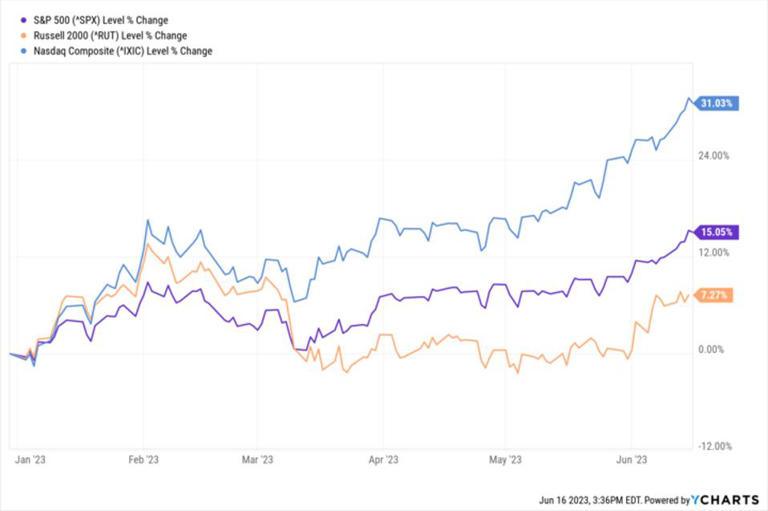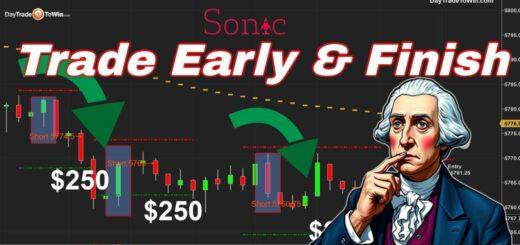Navigating the Summer Stock Rally: Expert Market Technicians Share Their Worries
The stock market tends to rise with the increase in temperatures during summer. After 164 days, the S&P 500 index has entered a bull market due to a 23% increase from its lowest point in October 2020. The recovery period from a bear market to a bull market was only longer in 1947, which took 281 days. According to recent reports, the Bureau of Labor Statistics has announced the lowest inflation rate in two years at 4%, and on June 14th, the Chairman of the Federal Reserve, Jerome Powell, announced that there would be no further increase in interest rates, ending a 15-month aggressive increase trend.
A number of experienced individuals in the market are warning that while there are potential indicators suggesting that the markets may have a favorable outcome during the summer, the continual rise in the stock market may not be accurate and could just be a short-lived trend.
Jim Stack, a seasoned market professional and the author of the InvesTech Research newsletter, believes that the ongoing bull market, if confirmed as genuine, would be regarded as an extraordinary event in the history of Wall Street.
According to Stack’s analysis, the Russell 2000, which includes stocks with the lowest market value, typically shows the greatest gains at the beginning of a period of rising stock prices. Over the last four decades, the index has achieved an average increase of 30% eight months after the start of a bullish period. Nevertheless, at present, the index has only risen around 13% from its lowest point in October.
Moreover, InvesTech uncovered that the primary reason for the S&P 500’s 81% increase this year can be traced back to the top 10 stocks including Apple, Tesla, and Amazon. This demonstrates a significant preference for big-name stocks and an undesirable trend of excessive optimism in the market, according to CEO Jim Stack. As a result, smaller stocks are being disregarded.
Stack claims that we are currently in a situation that we have not encountered before and therefore it is unfamiliar to us.

Stack is not predicting a recurrence of the financial crisis. However, he is pointing out that this year’s macroeconomic and technical indicators are signaling a riskier situation for investors. This situation bears similarity to the circumstances preceding the 2007 crisis.
InvesTech is concerned despite the Federal Reserve’s more careful approach to interest rates. Even though inflation is going down, the Fed is still relying on the Core Personal Consumption Expenditure Price Index, which excludes food and energy, to measure inflation. With this index showing more than double the desired inflation rate of 2%, the Fed will likely keep tinkering with interest rates.
For centuries, the Yield Spread Model of the Federal Reserve has proven to be a dependable predictor of economic hardships. This model computes the variance between the rates of short and long-term treasury bonds. InvesTech’s assessment reveals that at present, the model signals a 71% possibility of an economic slump.
The Conference Board’s Leading Economic Index (LEI), which is an indicator of an imminent or current economic decline, has decreased for 13 consecutive months. This offers further proof that a recession is likely.
Stack stated that the decrease of the LEI has exclusively taken place when the US economy was experiencing a downturn.
In longer bear markets, the subsequent bull markets are typically shorter, according to Stack. He gave the examples of the Great Depression between 1929 and 1932, where there were five bull markets, and the tech bubble in 2000, where Wall Street standards only saw two bull markets.
Jeff Hirsh, who is the editor-in-chief of the well-known Stock Trader’s Almanac that has been around for over half a century and is also a market technician, has shared his opinion that the current bull market does not follow the typical seasonal trend that is usually observed during summer, known as the “summer rally”. He explains that this “summer rally” is when the Dow Jones Industrials reaches its lowest point in May or June, and then its highest point within 60 to 90 days of that low. However, he argues that this trend is baseless and not applicable in reality.
Based on the data provided by InvesTech Research, the Dow Jones Industrial Average generally sees minor growth between the months of May and June, followed by a rebound in September. Furthermore, their research demonstrates that investing $10,000 from November to April may result in considerably higher profits compared to investing that same amount from May to October. This variance in returns could potentially yield an additional $970,000 or more to an individual’s profits.
David Keller, the Chief Market Strategist at StockCharts.com, stated that the positive start to June is unexpected as historically, June has not been a profitable month. However, Keller observed that the S&P 500 has become overbought due to this positive news, indicating the possibility of the end of the bull market, as this is a traditional sign.
In an interview with Forbes, Keller mentioned that certain prominent industry leaders like AAPL and MSFT are currently achieving their best performance rates up till now. As a result, it is probable that they will undergo a notable drop in performance.
Hirsh predicts that there will be a similar increase in the market to what was seen in mid-July 2022 in the coming year. However, it is expected that the market will decline in August and September as the Federal Reserve reevaluates interest rates.
Hirsh states that it is common for the market to decrease in activity during the summer due to people taking time off from work and investing. However, as autumn comes around, investors tend to revisit and reassess their investment plans while companies prepare to publish their results for the third quarter.
InvesTech recommends that investors exercise prudence and remember that it’s better to be defensive than offensive during the summer season.
Hirsh suggests that it is advantageous to enjoy the summer and put money into profitable sectors like healthcare and biotechnology. Furthermore, if investments are underperforming, it is advisable to take a cue from the Federal Reserve and pause to reassess tactics for the upcoming autumn season. The advice is to capitalize on the warm summer climate and boost savings.
According to Hirsh, those who understand the historical occurrences in the market will ultimately gain monetary advantages.




